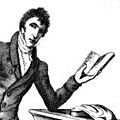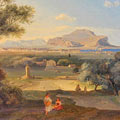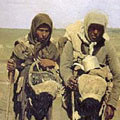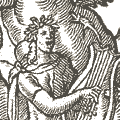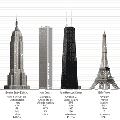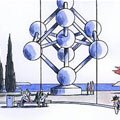Alleen al van de schilderijen van Rembrandt en Cézanne zou ik een leven lang kunnen genieten. Beide schilders hebben dit jaar iets te vieren. Rembrandt zijn 400ste geboortedag en Cézanne zijn 100ste sterfdag. Paul Cézanne, de vader van de moderne (abstracte) kunst, heeft een enorme invloed gehad op de schilderkunst van 100 jaar geleden. Een jaar na zijn dood, schilderde Picasso zijn demoiselles d’ Avignon en daarmee was het kubisme geboren. Ondenkbaar zonder het voorbereidende werk van Cézanne. Niet voor niets noemde Picasso hem ‘de vader van ons allemaal’. Aix-en-Provence eert zijn beroemde zoon dit jaar met een indrukwekkende overzichtstentoonstelling.
Bron: aixenprovencetourism.com


zoals Cézanne deze zag
Mount Sainte-Victoire and the rocks above Beaurecueil.
I said: “What a fine motif“.
Letter to Zola, 14 April 1878
On his canvases the painter reconciled its warm and cold tones, playing with complementary colors, carving out the landscape in abstract terms, not seeking to “depict“ a harmonious countryside but to compose a work in parallel with nature, with its own intrinsic being. Cézanne’s views of Mount Sainte-Victoire changed our perception of the locality for ever. The mountain passed from a state of nature to the status of an art object, becoming part of the heritage of mankind.
Bron: cezanne-2006.com
Paul Cézanne was born in Aix on 19 January 1839. His father, a future banker, ran a hat shop where trade was flourishing. With his sister Marie, born in 1841, he frequented the primary school on the rue des Epinaux. At the age of 10 he was enrolled at the Saint Joseph boarding school. Three years later, in 1852, the young scholar followed the classes of the Bourbon college (the present Mignet college) as a day student. There he met Emile Zola and Baptistin Baille. During the holidays, these inseparable friends roamed the Aixois countryside. All three read poetry voraciously and experienced the intense sensations of being at one with nature.
Bron: aixenprovencetourism.com


